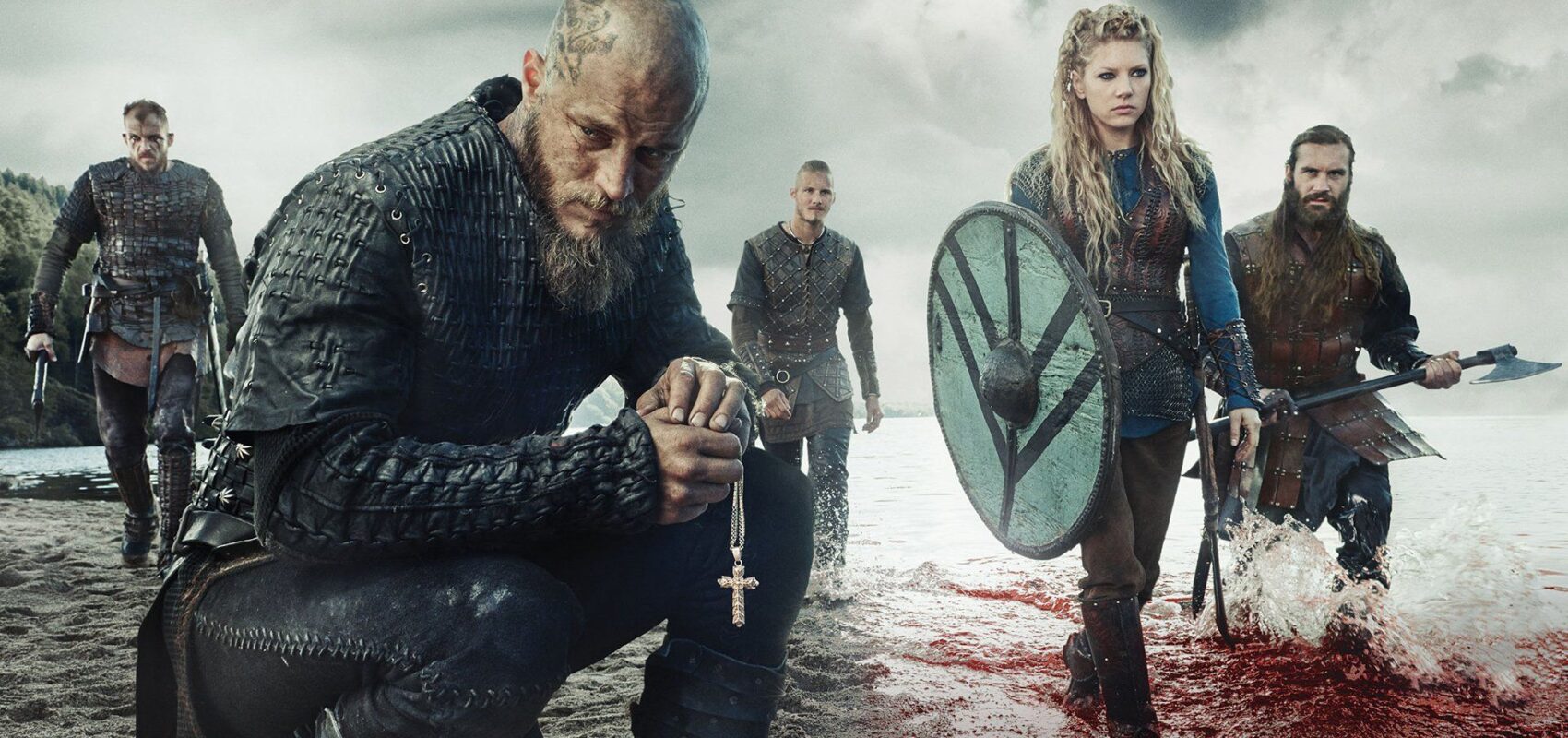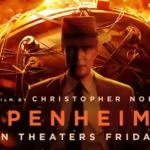Vikings TV Series Delve into the gripping world of ‘Vikings,’ a historical drama that masterfully blends fact and fiction to tell the story of legendary Norse heroes. This in-depth analysis explores the show’s rich tapestry of intricate plots and complex characters, tracing their evolution across six thrilling seasons. From the rugged landscapes brought to life through stunning cinematography to the haunting melodies that underscore key moments, every element of ‘Vikings’ is meticulously crafted. We’ll unravel the themes and symbolism woven into the narrative, shedding light on the deeper meanings behind the epic battles and intimate character moments. Join us as we examine the visionary direction of Michael Hirst and the lasting cultural impact of ‘Vikings,’ a series that has reshaped historical drama on television and continues to inspire a legion of fans.
Welcome to our exploration of one of television’s most captivating sagas, ‘Vikings.’ From its inception, this historical drama has enthralled audiences with its blend of historical authenticity and gripping storytelling. Join us as we journey through the epic tale of Norse warriors, exploring the intricacies of plot, character development, and the cultural impact that ‘Vikings’ has left in its wake. Whether you’re a longtime fan or discovering the series anew, prepare to uncover the secrets of this iconic show that has redefined the genre of historical drama.
| Title | Oppenheimer |
|---|---|
| Director | Christopher Nolan |
| Genre | Biographical drama, Historical thriller |
| Release Date | July 21, 2023 |
| Cast |
|
| Writers | Christopher Nolan, Kai Bird, Martin Sherwin |
| Produced By |
|
| Music by | Ludwig Göransson |
| Cinematography by | Hoyte Van Hoytema (director of photography) |
| Editing by | Jennifer Lame |
| Casting By | John Papsidera |
| Production Design by | Ruth De Jong |
| Art Direction by |
|
| IMDB Rating |

|
| Rotten Tomato Rating |

|
| Metacritic |

|
| Themes | Nuclear weapons, Scientific ethics, Cold War, Politics, Morality |
| Production Details | Shot on IMAX 65mm and 65mm large-format film |
| Production House |
|
| Where to Watch | Youtube, Apple TV, Amazon Prime Video, Google Play, Vudu, Peacock streaming service |
| Distributed By | Universal Pictures |
| Adapted By | Christopher Nolan, based on the book “American Prometheus” by Kai Bird and Martin J. Sherwin |
| Making Cost (Approx) | $100 million |
| Box Office Worldwide (Approx) | $957 million |
In the cold, misty fjords of ancient Scandinavia, where the air buzzes with the sounds of the forge and the scent of saltwater permeates the breeze, a saga unfolds—a saga of gods and mortals, of heroes and kings, of blood and honor. This is the tale of “Vikings,” a riveting journey into the heart of the Viking Age, brought to life with unparalleled authenticity and a touch of mythic grandeur.
Our story begins with Ragnar Lothbrok, a humble farmer with a heart full of ambition and a mind brimming with dreams. Ragnar, portrayed with captivating intensity by Travis Fimmel, is no ordinary man. He is driven by visions of the gods and the lure of uncharted lands beyond the known world. With eyes that see far beyond the horizon, Ragnar dares to defy tradition and challenge the status quo, seeking glory not in the familiar raids of the East but in the mysterious, unclaimed riches of the West.
With his fierce and loyal brother Rollo by his side, Ragnar’s journey is fraught with peril and promise. The two brothers, bound by blood yet destined for different paths, set sail on treacherous waters. Their destination: the fabled lands of England, ripe for plunder and conquest. Their voyage is a leap into the unknown, a testament to the Viking spirit of adventure and daring.
Back in Kattegat, Ragnar’s ambitions do not go unnoticed. Jarl Haraldson, the stern and wary ruler of their village, sees Ragnar’s growing influence as a threat. The tension between the visionary farmer and the established chieftain culminates in a battle not just for power but for the very soul of their people. Ragnar’s ascent from farmer to earl is marked by cunning, bravery, and an unshakable belief in his destiny.
As Ragnar ascends, so does the complexity of his world. His wife, Lagertha, a formidable shield-maiden played by Katheryn Winnick, stands as his equal in strength and spirit. Together, they forge a legacy that will echo through the ages. But the world of the Vikings is ever-changing, and new challenges arise. The arrival of their children, including the fierce Bjorn Ironside and the cunning Ivar the Boneless, sets the stage for a new generation of legends.
The series “Vikings” is more than just a chronicle of battles and raids; it is a deep dive into the Viking way of life, their beliefs, and their relentless quest for immortality through deeds. It explores the stark contrasts between the pagan world of the Norsemen and the emerging Christian kingdoms they encounter. The clash of these two cultures is depicted with profound insight and sensitivity, revealing both the brutality and the beauty of the era.
With each season, the scope of “Vikings” broadens. The narrative sweeps across the icy fjords of Scandinavia, the lush landscapes of England, and the exotic shores of the Mediterranean. Along the way, we meet a host of characters, each vividly portrayed and integral to the tapestry of the story. From the treacherous Floki, Ragnar’s closest friend and master shipbuilder, to King Ecbert of Wessex, a ruler as wise as he is ruthless, the series delves into the hearts and minds of those who shaped this epic era.
“Vikings” is a masterful blend of historical drama and mythological epic, brought to life by a cast of unforgettable characters and a story that weaves together themes of ambition, loyalty, betrayal, and redemption. It is a tale of a people who lived and died.
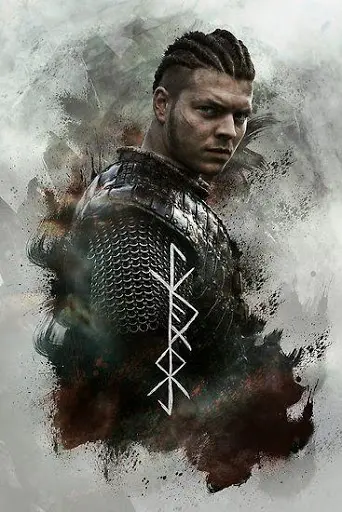
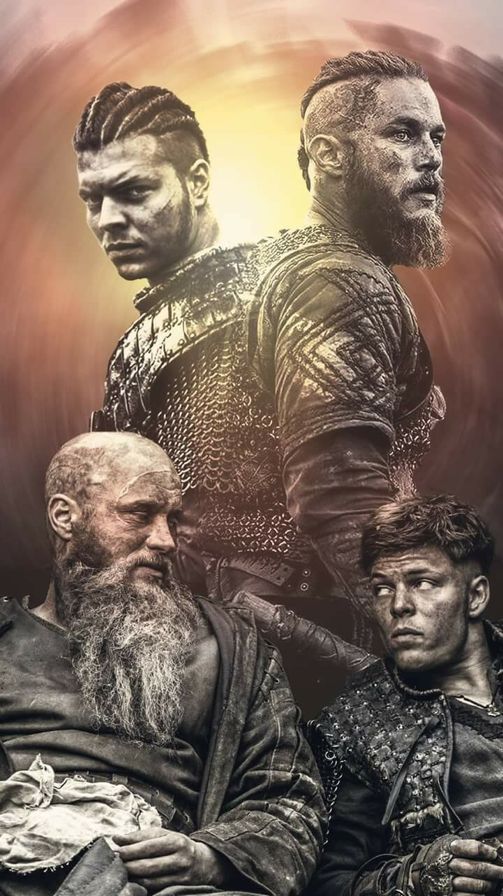

| Award | Category | Recipient(s) | Result | Year |
|---|---|---|---|---|
| Canadian Screen Awards | Best Direction in a Dramatic Series | “Ken Girotti (episode: The Sacrifice)” | Nominated | 2014 |
| Canadian Screen Awards | Best International Drama | Michael Hirst, Sheila Hockin, John Weber, Morgan O’Sullivan, James Flynn, Alan Gasmer, Sherry Marsh | Nominated | 2014 |
| Canadian Screen Awards | Best Performance by an Actress in a Continuing Leading Dramatic Role | Katheryn Winnick | Nominated | 2014 |
| Canadian Screen Awards | Best Photography in a Dramatic Program or Series | “John Bartley (episode: A King’s Ransom)” | Nominated | 2014 |
| Canadian Screen Awards | Best Picture Editing in a Dramatic Program or Series | “Aaron Marshall (episode: A King’s Ransom)” | Nominated | 2014 |
| Canadian Screen Awards | Best Visual Effects | “Bill Halliday, Dennis Berardi, Dominic Remane, Jim Maxwell, Julian Parry, Maria Gordon, Michael Borrett, Ovidiu Cinazan, Paul Wishart, Wilson Cameron (episode: Dispossessed)” | Won | 2014 |
| Canadian Screen Awards | Best Direction in a Dramatic Series | “Kari Skogland (episode: Blood Eagle)” | Nominated | 2015 |
| Canadian Screen Awards | Best International Drama | John Weber, Sheila Hockin, Michael Hirst, Morgan O’Sullivan, James Flynn, Alan Gasmer, Sherry Marsh | Won | 2015 |
| Emmy Awards | Outstanding Main Title Design | Rama Allen, Audrey Davis, Ryan McKenna, Westley Sarokin, Daniel Morris | Nominated | 2013 |
| Emmy Awards | Outstanding Sound Editing for a Series | “Jane Tattersall, Steve Medeiros, David McCallum, Brent Pickett, Dale Sheldrake, Yuri Gorbachow, Goro Koyama, Andy Malcolm (episode: Trial)” | Nominated | 2014 |
| Emmy Awards | Outstanding Main Title Design | Rama Allen, Audrey Davis, Ryan McKenna, Westley Sarokin, Daniel Morris | Nominated | 2013 |
| Emmy Awards | Outstanding Sound Editing for a Series | Jane Tattersall, Steve Medeiros, David McCallum, Brent Pickett, Dale Sheldrake, Yuri Gorbachow, Goro Koyama, Andy Malcolm (episode: Trial) | Nominated | 2013 |
| Emmy Awards | Outstanding Special Visual Effects in a Supporting Role | Dennis Berardi, Julian Parry, Bill Halliday, Wilson Cameron, Dominic Remane, Jim Maxwell, Ovidiu Cinazan, Maria Gordon, Mike Borrett (episode: Dispossessed) | Nominated | 2013 |
| Emmy Awards | Outstanding Special and Visual Effects in a Supporting Role | Dominic Remane, Julian Parry, Dennis Berardi, Michael Borrett, Bill Halliday, Ovidiu Cinazan, Maria Gordon, Jim Maxwell, Jeremy Dineen (episode: Invasion) | Nominated | 2014 |
| Emmy Awards | Outstanding Special Visual Effects | Michael Borrett, Bill Halliday, Julian Parry, Dominic Remane, Ovidiu Cinazan, Jeremy Dineen, Paul Wishart, Engin Arslan, Ken MacKenzie (episode: To The Gates) | Nominated | 2015 |
| Emmy Awards | Outstanding Makeup for a Single-Camera Series (Non-Prosthetic) | Tom McInerney, Katie Derwin, Ciara Scannell (episode: Yol) | Nominated | 2016 |
| Emmy Awards | Outstanding Sound Editing for a Series | Jane Tattersall, David McCallum, Dale Sheldrake, Steve Medeiros, Brennan Mercer, Yuri Gorbachow, Andy Malcolm, Goro Koyama (episode: The Last Ship) | Nominated | 2017 |
| Emmy Awards | Outstanding Special Visual Effects | Dominic Remane, Bill Halliday, Michael Borrett, Paul Wishart, Ovidiu Cinazan, Jim Maxwell, Kieran McKay, Jeremy Dineen, Tom Morrison (episode: The Last Ship) | Nominated | 2017 |
| Emmy Awards | Outstanding Hairstyling for a Single-Camera Series | Dee Corcoran, Catherine Argue, Jenny Readman, Ida Erickson & Zuelika Delaney (episode: Revenge) | Nominated | 2017 |
| Emmy Awards | Outstanding Makeup for a Single-Camera Series (Non-Prosthetic) | Tom McInerney, Katie Derwin, Ciara Scanell, Lizzanne Procter (episode: All His Angels) | Nominated | 2017 |
| Emmy Awards | Outstanding Special Visual Effects | Dominic Remane, Michael Borrett, Bill Halliday, Paul Wishart, Ovidiu Cinazan, Jim Maxwell, Kiernan McKay, Isabelle Alles, Tom Morrison (episode: On the Eve) | Nominated | 2017 |
| Emmy Awards | Outstanding Makeup for a Single-Camera Series (Non-Prosthetic) | Tom McInerney, Katie Derwin, Lizzanne Procter, Ciara Scannel, Deirdre Fitzgerald, Kate Donnelly (episode: Homeland) | Nominated | 2018 |
| Emmy Awards | Outstanding Special Visual Effects in A Supporting Role | Dominic Remane, Visual Effects Supervisor Bill Halliday, Becca Donohue, Leann Harvey, Tom Morrison, Ovidiu Cinazan, Jim Maxwell, Ezra Waddell & Warren Lawtey, (episode: The Best Laid Plans) | Won | 2020 |
The TV series “Vikings,” created by Michael Hirst, spans six seasons, weaving an epic saga around Ragnar Lothbrok and his descendants. The show skillfully blends historical events with Norse mythology and legendary tales, crafting a narrative rich in complexity and depth. Here is a comprehensive analysis of the plot and storytelling across all six seasons:
Vikings Season – 1
The journey begins in 793 AD, where we meet Ragnar Lothbrok, a farmer and warrior in Kattegat, Norway. Ragnar is portrayed as a visionary, dreaming of exploring and raiding westward, unlike the local chieftain, Earl Haraldson, who favors the traditional eastern raids. Ragnar’s ambitions lead him to build a new type of ship with Floki, enabling long sea voyages. This culminates in the successful raid of Lindisfarne, England, bringing wealth and slaves, including the Christian monk Athelstan.
Ragnar’s success stirs jealousy and fear in Earl Haraldson, leading to confrontations. Haraldson, threatened by Ragnar’s growing influence, tries to maintain his hold on power through force and manipulation. The tension escalates when Ragnar defies Haraldson and leads a raid to the west, proving his vision correct. Ragnar’s rise to power is marked by his duel with Haraldson, ultimately killing him and becoming the new Earl of Kattegat.
The season explores Ragnar’s relationships with his wife Lagertha, son Bjorn, and brother Rollo, whose loyalty is tested. Rollo’s internal conflict between loyalty to his brother and his own ambitions creates a simmering tension. Athelstan’s struggle with his faith after being captured by the Vikings adds another layer of complexity, as he is torn between his Christian beliefs and the allure of Norse culture.
The first season focuses heavily on establishing the main characters, particularly Ragnar’s complex personality, blending curiosity, ruthlessness, and strategic brilliance. The integration of historical elements like the raid on Lindisfarne grounds the story in real events, making the mythological aspects more compelling. The interactions between Norse pagans and Christian monks, especially Athelstan, highlight the cultural and religious clashes central to the series.
Vikings Season 2
As the story progresses, Ragnar consolidates power while dealing with internal family strife. His brother Rollo, having betrayed him, seeks redemption. Ragnar aligns with King Horik and Jarl Borg for further raids. However, alliances shift, leading to betrayal and conflict. Horik’s manipulations drive a wedge between Ragnar and his allies, leading to a bloody clash that sees Jarl Borg raiding Kattegat in Ragnar’s absence.
Ragnar’s focus on expansion brings him into contact with King Ecbert of Wessex, a cunning and ambitious ruler. Ragnar’s raids in England lead to a tenuous alliance with Ecbert, who sees the Vikings as potential allies against his enemies. This alliance is complicated by Ecbert’s fascination with Athelstan and the cultural exchange between them.
Ragnar’s personal life becomes more complicated with the introduction of Princess Aslaug, leading to tension with Lagertha and impacting his family dynamics. Lagertha’s departure and subsequent rise to power as an Earl in her own right reflect her strength and resilience. Rollo’s path to redemption is marked by his struggle to prove his loyalty to Ragnar and the community.
Characters like Rollo and Floki are given deeper story arcs, exploring themes of loyalty, jealousy, and faith. Floki’s religious zealotry and distrust of Christians, embodied in his relationship with Athelstan, foreshadow future conflicts. The series delves into the complexities of Viking politics, where shifting alliances and power plays are a constant threat. The use of prophecies and visions, especially concerning Ragnar’s fate, adds a mystical element to the storytelling.
Vikings Season – 3
Ragnar leads his people to raid Paris, one of the most ambitious Viking raids. Despite initial success, the venture is fraught with challenges, including internal dissent and strategic setbacks. Ragnar’s strategic brilliance is showcased in the multi-stage attack on Paris, but his leadership is tested by dissent among his followers and the cunning defenses of the Franks.
Athelstan’s religious struggles and his bond with both Ragnar and King Ecbert play crucial roles, culminating in his tragic death at the hands of Floki. Athelstan’s death deeply affects Ragnar, pushing him into a spiral of grief and doubt. This loss also impacts the alliance with Ecbert, who mourns the loss of his friend and confidant.
Back in Kattegat, Aslaug’s position becomes more prominent, and new characters like the enigmatic Harbard influence the power dynamics. Harbard’s arrival brings mystery and tension, particularly affecting Aslaug and Siggy, and leading to tragic consequences. The subplot of Harbard’s mystical presence adds an eerie, supernatural dimension to the series.
The season ends on a somber note with Athelstan’s death, deeply affecting Ragnar and setting the stage for future conflicts. Ragnar’s growing disenchantment with the Viking way of life and his increasing isolation are key themes, as he contemplates his legacy and the future of his people.
The raid on Paris is depicted with grand, cinematic battles showcasing the brutal reality of Viking warfare. The series continues to explore the emotional and psychological depths of its characters, particularly through Ragnar’s grief and inner turmoil. The use of symbolic imagery, such as ravens and visions, enriches the narrative, emphasizing the mystical and foreboding aspects of the story.
Vikings Season – 4
The season is split into two parts. The first part deals with Ragnar’s return to Paris, internal family strife, and Rollo’s betrayal by siding with the French. Rollo’s transformation into a French nobleman and his marriage to Princess Gisla create a complex dynamic, as he struggles with his Viking identity and new loyalties. Ragnar’s attempts to reclaim Paris are marked by intense battles and strategic maneuvers, but Rollo’s newfound strength and resolve prove formidable.
The second part focuses on Ragnar’s decline and the rise of his sons. Ragnar’s final voyage to England, seeking redemption and revenge, ends with his capture and execution by King Aelle. This event is depicted with a poignant mix of brutality and reflection, as Ragnar embraces his fate, leaving a lasting impact on his sons and enemies alike.
After Ragnar’s death, his sons—Bjorn, Ivar, Ubbe, Hvitserk, and Sigurd—seek vengeance, leading to the Great Heathen Army’s invasion of England. The invasion is a massive undertaking, showcasing the unity and determination of Ragnar’s sons, despite their differences. Bjorn’s leadership, Ivar’s ruthless tactics, and the brothers’ internal conflicts drive the narrative forward.
In Kattegat, Lagertha takes power, but faces constant threats from Aslaug’s followers and other rivals. Lagertha’s rule is marked by strength and wisdom, but her past and the relentless challenges from within and outside Kattegat test her resolve.
The narrative shifts focus from Ragnar to his sons, each with distinct personalities and destinies. Ivar’s emergence as a formidable and ruthless leader contrasts with Bjorn’s more honorable and exploratory nature. The themes of revenge and legacy are central, driving the actions of Ragnar’s sons and shaping the future of the Viking world. The series maintains its high production values, with visually stunning battles and intricate set designs.
Vikings Season – 5
The sons of Ragnar are now the central figures, with Ivar and Bjorn vying for power. Ivar’s ruthlessness leads to civil war in Kattegat, as his tyrannical rule alienates allies and fosters rebellion. Ivar’s complex relationship with his brothers, particularly Hvitserk, and his psychological struggles are explored in depth.
Bjorn explores the Mediterranean, seeking new lands and alliances. His travels bring him into contact with different cultures and new challenges, reflecting the Vikings’ adventurous spirit and quest for glory. Bjorn’s journey is marked by both personal growth and tactical acumen, as he navigates unfamiliar territories and forms strategic alliances.
Floki embarks on a spiritual journey to Iceland, seeking a new Viking settlement. Floki’s arc is a profound exploration of faith, vision, and leadership, as he grapples with the harsh realities of founding a new community in a harsh and unforgiving land. His journey is filled with mystical encounters and deep introspection, highlighting his role as a spiritual seeker and visionary.
Heahmund, a warrior bishop, becomes a significant character, highlighting the ongoing religious conflicts between pagans and Christians. Heahmund’s fierce warrior spirit and religious zeal create a compelling dynamic as he allies with Lagertha against Ivar’s tyranny. His complex character adds depth to the religious and cultural conflicts central to the series.
Alliances continue to shift, with characters like Lagertha, Harald, and Hvitserk playing crucial roles in the unfolding drama. Lagertha’s struggle to maintain power in Kattegat, Harald’s ambition for kingship, and Hvitserk’s quest for identity and purpose weave together into a rich tapestry of intrigue and conflict.
The season juggles multiple storylines, showcasing the diverse paths of Ragnar’s sons and their impact on the Viking world. The characters continue to evolve, with Ivar’s descent into tyranny and Bjorn’s growth as a leader being central arcs. The series expands its scope to include new locations, emphasizing the Vikings’ adventurous spirit and quest for glory.
Vikings Season – 6
The final season ties up the various character arcs, focusing on the ultimate fates of Ragnar’s sons. Ivar and Hvitserk’s journey leads them to Russia, aligning with Prince Oleg for an invasion of Scandinavia. Oleg’s manipulation of Ivar and the complex political dynamics within Russia add layers of intrigue and tension. The brothers’ relationship is strained as they navigate loyalty, power, and survival in a foreign land.
Bjorn, now King of Kattegat, faces immense challenges defending his kingdom. His struggle against internal dissent, external threats, and personal demons is a central theme. Bjorn’s leadership is tested in every aspect, from battlefield tactics to political strategy, and his character’s depth is explored through his interactions with family, friends, and foes.
Floki’s journey in Iceland comes to a climactic and mystical conclusion, reflecting his spiritual odyssey and the broader themes of faith and destiny. His legacy as a visionary and seeker of truth is cemented, leaving a lasting impact on those who followed him.
The season explores themes of legacy, redemption, and the impact of Ragnar’s actions on his sons and their world. The brothers’ paths diverge and converge in unexpected ways, with each facing their own trials and triumphs. The series concludes with epic battles, personal sacrifices, and the fall of key characters, including Bjorn and Ivar. Bjorn’s death is portrayed as a heroic and symbolic end to his journey, while Ivar’s fall is marked by a mix of brutality and tragic fate.
The final season is marked by high-stakes drama and emotional resolutions, providing closure to long-running storylines. The series reflects on Ragnar’s legacy, with his sons’ actions being a testament to his influence and vision. The series maintains its cinematic quality, with stunning visuals and emotionally charged performances driving the narrative to its conclusion.
Conclusion
“Vikings” masterfully combines historical events, Norse mythology, and legendary tales to create a compelling narrative. Through its intricate plot, complex characters, and thematic depth, the show explores the Viking Age’s brutality, ambition, and cultural conflicts. The storytelling is marked by its focus on family dynamics, power struggles, and the pursuit of glory, making “Vikings” a memorable and impactful saga in television history.
“Don’t waste your time looking back, you’re not going that way.”
Ragnar Lothbrok
The saga of “Vikings” unfolds with a tapestry woven from themes as rich and varied as the Norse landscape itself, resonating with the echoes of ancient myths and historical truths. At its heart, the series explores the relentless pursuit of power and the insatiable hunger for discovery that define the Viking spirit. From the shores of Kattegat to the vast expanse of the Mediterranean and the mysterious lands of the Rus, “Vikings” navigates the complexities of human ambition, the clash of cultures, and the enduring bonds of family.
Central to the narrative is the theme of power and ambition, embodied in the character of Ragnar Lothbrok and his descendants. Ragnar’s journey from a farmer to a king illustrates the intoxicating allure of power and the sacrifices it demands. His sons, each shaped by their father’s legacy, grapple with their own quests for dominance. Bjorn’s exploration of new territories, Ivar’s ruthless pursuit of control, and Ubbe’s search for a new land highlight different facets of ambition, illustrating how the thirst for power can both unite and divide.
The clash of cultures is another pivotal theme, brought to life through the interactions between the pagan Vikings and the Christian Saxons. The series delves into the complexities of cultural exchange, conflict, and assimilation. Athelstan’s journey from a Christian monk to a trusted advisor of Ragnar epitomizes this theme, as he navigates the tumultuous waters of faith and identity. The ongoing conflicts and uneasy alliances between characters like King Ecbert, Bishop Heahmund, and the Vikings underscore the broader struggles between these two worlds.
Interwoven with the quest for power and cultural clashes is the theme of faith and spirituality. The Norse gods and Christian God play crucial roles in shaping the characters’ destinies. Floki’s devout paganism, Athelstan’s spiritual struggle, and Lagertha’s encounters with the mystical seer weave a rich tapestry of belief and doubt. The series often juxtaposes the tangible world of battles and politics with the intangible realm of visions, prophecies, and divine interventions, adding a layer of mysticism and depth to the narrative.
Family and loyalty are the bedrock upon which much of the drama unfolds. Ragnar’s relationships with Lagertha, Aslaug, and his children form the emotional core of the series. The bonds between siblings, such as the fraught but unbreakable ties between Ragnar and Rollo, and later between Ragnar’s sons, drive much of the plot. These relationships are tested by ambition, betrayal, and the harsh realities of Viking life, yet they remain a poignant reminder of the enduring strength of familial bonds.
The theme of legacy and destiny pervades the series, particularly in the latter seasons as Ragnar’s sons seek to define their own paths. Ragnar’s legacy looms large over them, influencing their decisions and shaping their fates. The series contemplates what it means to leave a mark on the world, whether through conquest, exploration, or the founding of new societies. The characters are constantly aware of the sagas that will be told about them, driving them to acts of both greatness and folly.
Survival and resilience are ever-present themes, depicted through the Vikings’ relentless drive to conquer new lands and endure harsh environments. From the brutal winters of Scandinavia to the unforgiving deserts of North Africa, the Vikings’ adaptability and tenacity are showcased. Characters like Lagertha, who rises from a farmer’s wife to a formidable ruler, and Bjorn, who faces countless trials in his quest for glory, embody this spirit of resilience.
Lastly, the series explores the duality of human nature, portraying its characters as complex individuals capable of both immense cruelty and profound compassion. Ragnar’s multifaceted personality, Ivar’s blend of brilliance and brutality, and Floki’s internal conflict between faith and friendship highlight this theme. “Vikings” does not shy away from depicting the darker aspects of its characters, but it also reveals their moments of vulnerability, love, and honor.
In the grand narrative of “Vikings,” these themes intertwine to create a rich and compelling saga that resonates with the timeless human quest for meaning, power, and belonging. The series not only tells the story of a people and their age but also reflects the eternal struggles and triumphs that define the human experience.
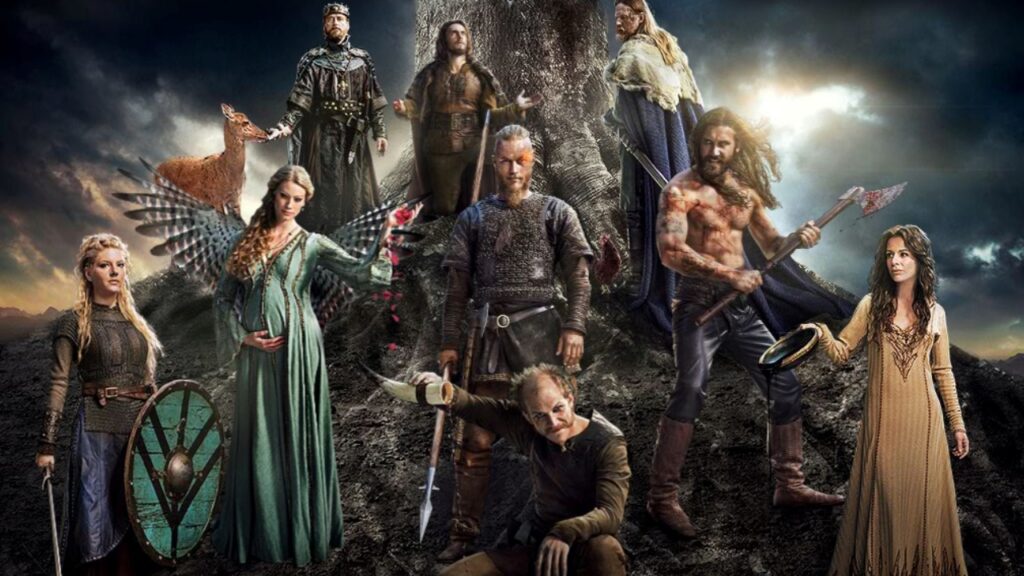
Throughout the entirety of the “Vikings” series, symbolism serves as a powerful narrative tool, enriching the story with layers of meaning and depth that resonate beyond the historical events depicted. From the very beginning, symbols such as the raven, which represents Odin’s messengers in Norse mythology, are woven into the fabric of the show. Ravens appear at crucial moments, often signaling impending danger or significant decisions. They embody not just a visual motif but also a spiritual connection to the gods and a foreshadowing of events to come.
The juxtaposition of Norse paganism and Christianity is another profound symbol that runs throughout the series. Characters like Athelstan, the Christian monk captured by Ragnar, serve as a bridge between these two worlds. His internal struggle with faith, torn between his Christian beliefs and the allure of Norse culture, mirrors the broader clash of civilizations portrayed in the show. This religious tension underscores themes of cultural identity, belief systems, and the inevitable clash of ideologies during the Viking Age.
The Viking ships themselves are symbols of exploration, conquest, and freedom. The meticulously crafted longships enable the Vikings to navigate treacherous waters, raid distant lands, and establish trade routes across Europe. These ships symbolize not only the Vikings’ prowess as seafarers but also their aspirations for wealth, power, and glory. Each voyage undertaken by characters like Ragnar and his sons becomes a metaphorical journey of discovery and destiny, reflecting their personal ambitions and the broader ambitions of their people.
In addition to tangible symbols, the natural world plays a significant symbolic role in the series. The harsh landscapes of Scandinavia, with its rugged mountains and icy fjords, reflect the harsh realities of Viking life—survival against the elements, the relentless pursuit of resources, and the resilience required to thrive in such an environment. The seasons themselves, from the harsh winters to the brief summers, mirror the cyclical nature of life and death, echoing the themes of renewal and transformation experienced by the characters.
Furthermore, the use of dreams, visions, and prophecies adds a mystical dimension to the narrative, imbuing it with a sense of fate and inevitability. Characters like Ragnar, Lagertha, and Ivar experience prophetic visions that foreshadow their destinies and shape their decisions. These visions are not merely plot devices but symbolic manifestations of characters grappling with their own mortality, legacy, and place in the grand tapestry of history.
Ultimately, the symbolism in “Vikings” transcends mere visual or narrative devices; it becomes a storytelling technique that deepens our understanding of the characters, themes, and historical context. Whether through the iconic raven, the clash of religions, the symbolism of the longships, or the mystical undercurrents of dreams and visions, “Vikings” uses symbolism to weave a complex and resonant tapestry of the Viking Age—an epic saga that explores the human condition, cultural identity, and the timeless pursuit of glory and legacy.
Throughout its six-season run, “Vikings” immerses viewers in the rugged and mystical world of Norse culture through a masterful use of visual and auditory elements. These components not only enrich the storytelling but also evoke a visceral experience that resonates with the series’ exploration of power, spirituality, and the complexities of human nature.
Visual Elements:
From the outset, “Vikings” captivates with its meticulous attention to visual detail, bringing to life the harsh yet breathtaking landscapes of Scandinavia. The fjords of Norway, with their towering cliffs and icy waters, serve as a stark backdrop for the Vikings’ epic voyages and fierce battles. In contrast, the bustling marketplace of Kattegat pulses with life, its wooden longhouses adorned with intricate carvings and vibrant tapestries that reflect the cultural richness of Viking society.
The series’ production design is a testament to historical accuracy and craftsmanship. Authentic costumes, crafted from leather, fur, and chainmail, not only define the characters but also evoke the practical yet ornate attire of Norse warriors and chieftains. Similarly, the design of Viking longships, with their sleek hulls and dragon-headed prows, showcases the engineering prowess that enabled these seafarers to navigate treacherous waters and raid distant shores.
Cinematography in “Vikings” is both sweeping and intimate, capturing the grandeur of large-scale battles and the subtleties of personal relationships. Aerial shots of raiding parties descending upon English monasteries convey the chaos and brutality of Viking warfare, while close-ups of characters like Ragnar Lothbrok reveal their inner turmoil and resolve. Each frame is composed with artistic precision, enhancing the narrative’s emotional depth and thematic resonance.
Symbolism and visual motifs play a pivotal role in “Vikings,” enriching the storytelling with layers of meaning. The recurring imagery of ravens, Odin’s sacred birds, serves as omens of both death and enlightenment, foreshadowing the characters’ fates and spiritual journeys. Color palettes, from the stark blues and grays of the North Sea to the rich reds and golds of King Ecbert’s court, reflect the cultural contrasts and shifting alliances that define the Viking world.
Auditory Elements:
Sound design and music in “Vikings” create a rich tapestry of auditory experiences that complement the series’ visual spectacle. The haunting melodies of traditional Nordic instruments, such as the lyre and the lur, evoke the spiritual and cultural traditions of the Norse people, heightening moments of triumph and tragedy alike. Modern compositions blend seamlessly with ancient sounds, bridging the gap between past and present and reinforcing the series’ timeless themes of honor, destiny, and the pursuit of power.
Sound effects in “Vikings” are used to visceral effect, immersing viewers in the visceral realities of Viking life. The clash of swords, the thunderous roar of battle cries, and the creak of longships cutting through turbulent waters lend authenticity to the series’ epic action sequences. These auditory cues not only heighten the suspense of key moments but also underscore the characters’ primal struggles for dominance and survival in a brutal world.
Voiceover narration, particularly through characters like Ragnar Lothbrok and Athelstan, offers intimate insights into their inner thoughts and philosophical musings. These reflective monologues deepen the audience’s connection to the characters’ emotional journeys, revealing their doubts, fears, and aspirations in their own words. This narrative device not only provides context for their actions but also underscores the series’ exploration of faith, identity, and the existential dilemmas faced by its protagonists.
In conclusion, “Vikings” stands as a testament to the power of visual and auditory storytelling in capturing the essence of a historical era and cultural milieu. Through its meticulous craftsmanship, evocative imagery, and immersive soundscapes, the series transports viewers to a world where ambition clashes with tradition, and where the legacy of heroes and villains alike is etched into the annals of history.
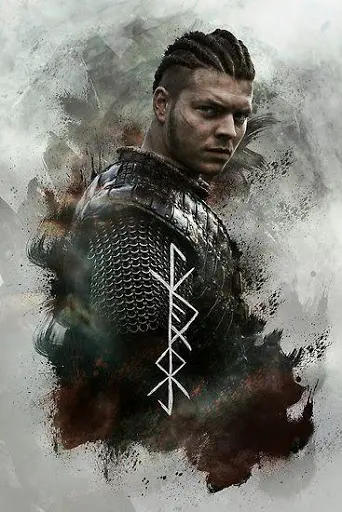
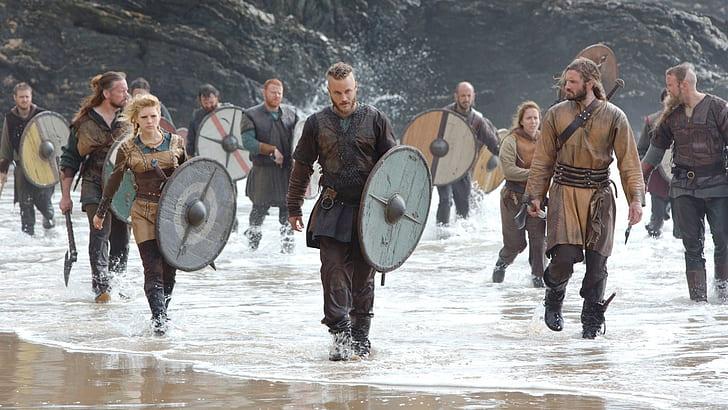

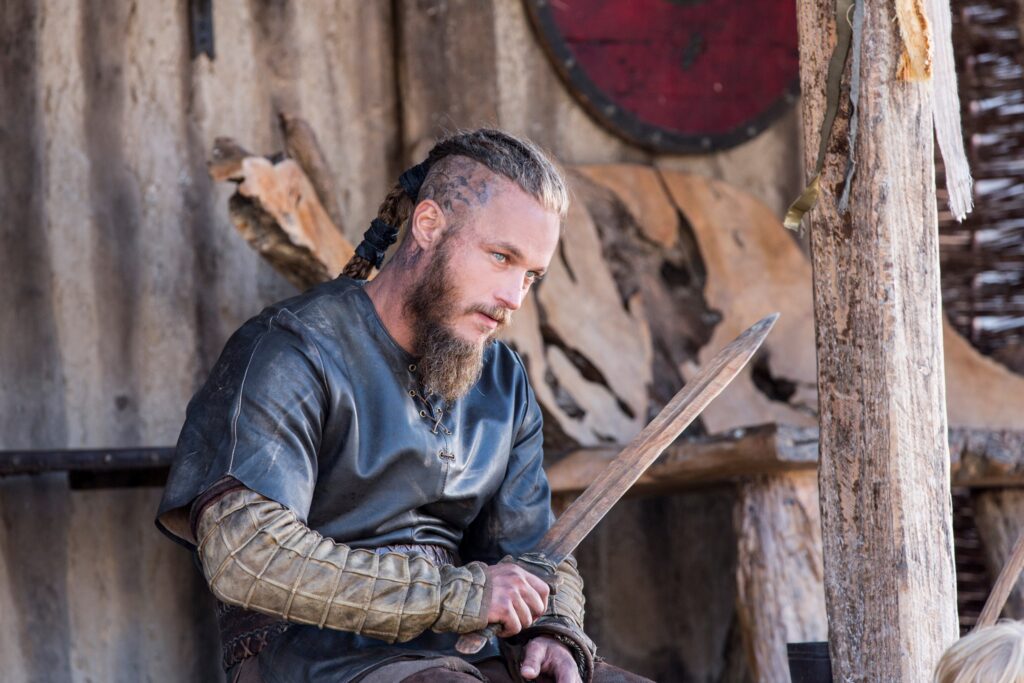
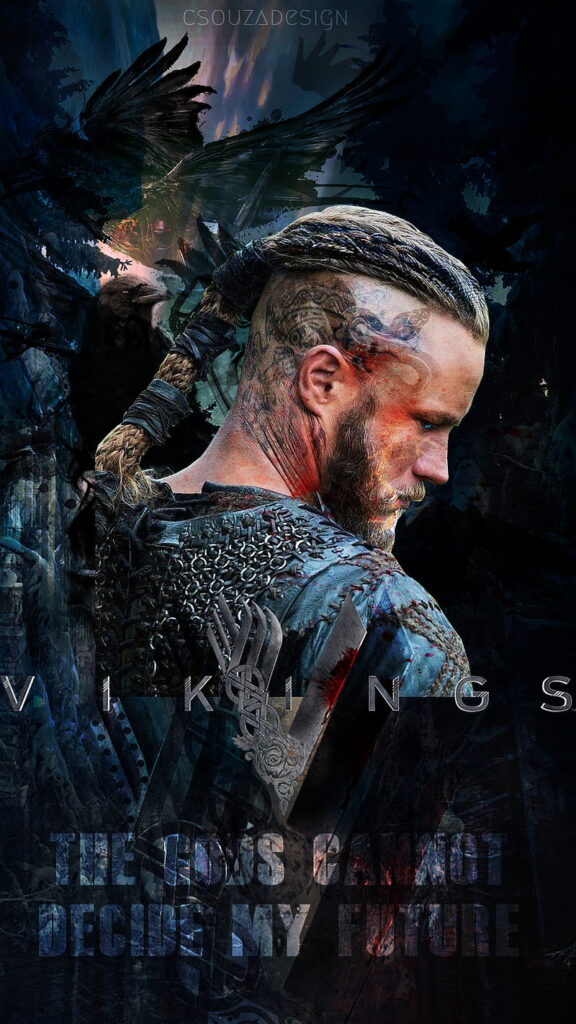
“Cinematography in ‘Vikings’ is a cornerstone of the series’ immersive storytelling, capturing the essence of the Viking Age through meticulous framing, dynamic camera movements, and evocative lighting. Each visual element serves to deepen the audience’s engagement with the characters’ journeys and the historical context in which they unfold.
The series opens with breathtaking aerial shots that establish the vast and untamed landscapes of Scandinavia. These shots not only set the geographical stage but also emphasize the raw beauty and formidable nature of the Viking homeland. From towering fjords to dense forests and rugged coastlines, the cinematography underscores the harsh yet awe-inspiring environment that shaped Viking society and its seafaring culture.
Camera movements in ‘Vikings’ are diverse and purposeful, adapting to the needs of each scene. During battle sequences, the camera adopts a kinetic and immersive approach, following the frenetic action with fluid tracking shots and dynamic pans. This technique places viewers in the midst of the chaos, experiencing the intensity and brutality of Viking warfare firsthand. Quick cuts and close-ups of combatants’ faces capture the visceral emotions and personal stakes of each confrontation, enhancing the dramatic impact.
Conversely, quieter moments in ‘Vikings’ are framed with a more contemplative and deliberate style. Close-ups of characters’ expressions reveal their inner conflicts, aspirations, and fears, allowing viewers to connect intimately with their journeys. The use of shallow depth of field and soft focus enhances the emotional resonance of these scenes, emphasizing the characters’ humanity amidst the epic sweep of historical events.
Lighting in ‘Vikings’ plays a pivotal role in setting mood and atmosphere. Scenes set within the dimly lit interiors of Kattegat’s longhouses or Wessex’s royal courts use chiaroscuro lighting to create a sense of mystery and intrigue. Shadows and highlights sculpt the faces of characters, heightening their psychological depth and adding layers of complexity to their interactions. In contrast, daylight scenes on open seas or bustling marketplaces are bathed in natural light, conveying a sense of freedom and openness that contrasts with the confined spaces of Viking settlements.
Symbolism through cinematography is subtly woven into the fabric of ‘Vikings,’ enriching the narrative with visual motifs and allegorical imagery. The recurring presence of ravens, symbols of Odin’s wisdom and foreknowledge, appears in pivotal moments to foreshadow events and underscore the characters’ destinies. These symbolic elements deepen the series’ exploration of fate, spirituality, and the interconnectedness of human lives within the tapestry of history.
The cinematography of ‘Vikings’ also embraces long takes and wide shots to emphasize scale and spectacle. Scenes depicting the majesty of Viking longships sailing across vast seas or the sprawling landscapes of England’s countryside highlight the epic scope of the series. These expansive shots not only showcase the production’s attention to historical detail but also immerse viewers in the grandeur and adventure of Viking exploration and conquest.
In conclusion, the cinematography of ‘Vikings’ is a testament to the series’ commitment to visual storytelling and technical excellence. Through its dynamic camera work, evocative lighting, and symbolic imagery, the series transports viewers to a world of myth, legend, and historical drama. Each frame is crafted with precision and artistry, capturing the essence of the Viking Age and the timeless themes of ambition, honor, and the human spirit.”
In the epic saga of “Vikings,” the role of sound and music transcends mere auditory embellishment; it emerges as a vital storyteller, weaving intricate narratives through melodies and harmonies that resonate with the pulse of Norse sagas and conquests. From the rugged shores of Scandinavia to the verdant landscapes of England and beyond, the series utilizes sound and music not only to accompany the action but to shape emotion, suspense, and cultural ambiance with meticulous craftsmanship.
Themes and Atmosphere
- Cultural Resonance
The soundtrack of “Vikings” is deeply rooted in Norse heritage, employing traditional instruments such as the hauntingly melodic hurdy-gurdy, resonant Nordic drums, and ethereal vocals reminiscent of ancient Scandinavian chants. These elements create a primal, evocative atmosphere that transports viewers into a world of fjords, longships, and pagan rituals, immersing them in the cultural essence of the Viking Age. - Emotional Depth
Each character in “Vikings” is accompanied by a distinctive musical motif that reflects their inner struggles, aspirations, and triumphs. The brooding introspection of Ragnar Lothbrok, the fierce determination of Lagertha, and the conflicted ambitions of Bjorn Ironside are all underscored by melodies that mirror their emotional landscapes. This symbiotic relationship between character and music enhances the audience’s empathy and emotional engagement, forging a deeper connection to the unfolding drama.
Narrative Enhancements - Pacing and Tension
The rhythmic cadences and dynamic orchestrations of the music in “Vikings” serve as a narrative heartbeat, driving the pacing of the story and intensifying moments of conflict and resolution. During pivotal battle scenes, the crescendo of drums and horns amplifies the adrenaline-charged atmosphere, heightening tension and excitement as alliances clash and fates hang in the balance. Strategic pauses and moments of silence before a decisive strike enhance anticipation, drawing viewers into the visceral immediacy of the characters’ struggles. - Cultural Contrast
As the Vikings venture beyond their native lands and encounter foreign cultures, the series’ music undergoes a subtle evolution, blending Norse instrumentation with regional influences. Whether in the bustling markets of Kattegat or the hallowed halls of Wessex, this musical fusion not only underscores the clash of civilizations but also enriches the narrative tapestry, illustrating the diversity and complexity of the world these characters inhabit. This cultural juxtaposition serves as a poignant reminder of the ever-changing landscapes of power, identity, and allegiance in the Viking Age.
Directorial Vision - Collaborative Artistry
The integration of sound and music in “Vikings” is a testament to the collaborative artistry between creator Michael Hirst and composer Trevor Morris. Hirst’s meticulous direction ensures that every musical cue aligns seamlessly with the thematic essence of each scene, enhancing character motivations and plot developments with melodic precision. Morris, in turn, crafts compositions that not only evoke the spirit of the Viking era but also resonate with contemporary audiences, blending historical authenticity with emotional resonance. - Legacy and Impact
Beyond its immediate narrative impact, the soundtrack of “Vikings” leaves a lasting impression on viewers, its melodies and harmonies lingering in the collective memory long after the series concludes. The evocative power of its music transcends time and space, capturing the essence of heroism, sacrifice, and exploration inherent in the Viking spirit. As a result, the soundtrack stands as a testament to the enduring influence of music as a silent narrator, enriching the storytelling experience and leaving an indelible mark on the cultural legacy of the series.
In “Vikings,” the marriage of sound and music becomes an integral part of its narrative fabric, transcending the conventional role of auditory accompaniment to become a powerful storytelling device in its own right. Through its evocative melodies, cultural resonance, and emotional depth, the soundtrack of “Vikings” not only enhances the viewer’s immersion in the world of Norse sagas but also underscores the timeless allure of exploration, conquest, and the human spirit. Thus, within the soundscape of “Vikings,” lies a symphony of storytelling that speaks volumes in melodies and harmonies, resonating with the echoes of a bygone era and the enduring spirit of adventure.
In the grand tapestry of “Vikings,” the directorial style of Michael Hirst emerges as a beacon of storytelling prowess, guiding the series through the tumultuous seas of Norse history with a blend of historical accuracy, dramatic depth, and artistic vision. Behind the camera, Hirst’s directorial approach transforms historical narratives into gripping tales of ambition, betrayal, and exploration, resonating with audiences through its compelling characters and immersive world-building.
Vision and Narrative Depth
- Historical Authenticity:
At the heart of Hirst’s directorial style lies a steadfast commitment to historical authenticity. Drawing from extensive research and scholarly insights, he meticulously reconstructs the Viking Age with attention to detail, from the intricacies of Norse society to the dynamics of political intrigue and warfare. This dedication to accuracy ensures that “Vikings” not only entertains but also educates, offering viewers a window into the complexities of Viking culture and conquest.
- Character-Centric Storytelling:
Hirst’s directorial vision places characters at the forefront of the narrative, delving deep into their motivations, flaws, and aspirations. From the enigmatic Ragnar Lothbrok to the fierce shieldmaiden Lagertha and the ambitious Bjorn Ironside, each character’s journey is meticulously crafted to unfold organically, allowing for nuanced exploration of personal growth, moral dilemmas, and the consequences of power. Their arcs are shaped not only by historical events but also by emotional conflicts and philosophical debates that resonate across time.
Visual Aesthetics
- Cinematic Grandeur:
The directorial lens of “Vikings” captures the grandeur of the Viking world with cinematic finesse. Sweeping landscapes, dramatic lighting, and meticulous set designs transport viewers to ninth-century Scandinavia and beyond, evoking a sense of scale and authenticity that enriches the narrative experience. Whether amidst the rugged beauty of Kattegat or the lush landscapes of England, Hirst’s visual storytelling invites audiences to immerse themselves in a world where adventure and adversity collide amidst breathtaking vistas.
- Symbolism and Imagery:
Hirst employs symbolism and visual imagery to deepen the thematic resonance of “Vikings.” From recurring motifs like the raven, symbolizing Odin’s presence and impending doom, to the juxtaposition of light and shadow in moments of moral ambiguity, each visual element serves as a narrative thread that weaves through the series, enriching its storytelling tapestry and inviting viewers to interpret deeper layers of meaning. The use of symbols and imagery not only enhances the visual appeal but also reinforces the series’ thematic exploration of fate, destiny, and the human condition.
Collaborative Artistry
- Collaborative Spirit:
Hirst’s directorial style thrives on collaboration with a dedicated team of writers, actors, and crew members who share his passion for historical storytelling. Together, they craft narratives that resonate with authenticity and emotional depth, drawing upon each individual’s expertise to breathe life into characters, settings, and plotlines that resonate with audiences worldwide. The collaborative effort extends beyond the script to include historical consultants who ensure accuracy in cultural practices, languages, and social dynamics, further enriching the authenticity of the narrative.
- Musical Harmony:
Composer Trevor Morris’s evocative score complements Hirst’s directorial vision with melodies that evoke the spirit of adventure, heroism, and tragedy. Collaborating closely with Morris, Hirst ensures that the musical landscape of “Vikings” enhances the emotional impact of each scene, from epic battles to intimate character moments, forging a symbiotic relationship between visual storytelling and auditory immersion. The music not only sets the tone for key moments but also underscores the emotional journeys of characters, enhancing their arcs and deepening viewer engagement with their struggles and triumphs.
Legacy and Influence
- Cultural Impact:
Beyond its narrative acclaim, “Vikings” has left an enduring cultural legacy, sparking renewed interest in Viking history, mythology, and cultural heritage. Hirst’s directorial style, characterized by its blend of historical rigor and dramatic flair, has set a benchmark for historical dramas, inspiring subsequent adaptations and interpretations that continue to explore the complexities of Viking society and legend. The series’ influence extends beyond television to academic discourse, artistic interpretations, and cultural tourism, showcasing the enduring fascination with Norse mythology and history.
- Directorial Legacy:
As “Vikings” concludes its saga, Michael Hirst’s directorial legacy endures through its lasting impact on television and popular culture. His visionary approach to storytelling, marked by meticulous research, character-driven narratives, and visual splendor, has elevated historical drama to new heights, earning accolades and admiration from audiences and critics alike. Through his directorial mastery, Hirst has crafted a saga that transcends entertainment to become a timeless testament to the enduring power of myth, history, and the human spirit. His legacy serves as inspiration for future storytellers and filmmakers, encouraging them to explore the rich tapestry of history with creativity, authenticity, and profound storytelling.
In the directorial realm of “Vikings,” Michael Hirst’s visionary approach transforms history into legend, blending meticulous authenticity with compelling storytelling to create a saga that resonates with audiences on a profound level. Through his directorial lens, viewers embark on an epic journey through the Viking Age, where courage, ambition, and the pursuit of destiny collide amidst breathtaking landscapes and timeless narratives of heroism and conquest. Thus, within the directorial style of “Vikings” lies a testament to the transformative power of storytelling and the enduring allure of legendary tales, ensuring that its legacy endures in the annals of television history.
As the epic tale of “Vikings” unfolded across television screens, it ignited a fervor among viewers and critics alike, weaving together historical drama, mythic resonance, and visceral action in a tapestry that captivated audiences worldwide. Behind the curtain of critical reception lies a saga of acclaim, analysis, and the enduring impact of a series that dared to explore the depths of Viking legend and lore.
Emergence of an Epic
- Initial Impressions:
When “Vikings” first set sail in 2013, critics were immediately struck by its bold narrative scope and meticulous attention to historical detail. The series, created by Michael Hirst, received praise for its ambitious portrayal of Viking society, politics, and exploration, drawing comparisons to historical epics while carving out its own niche in the television landscape.
- Character Depth and Development:
Central to the acclaim of “Vikings” was its richly drawn characters, led by the enigmatic Ragnar Lothbrok (portrayed by Travis Fimmel) and the formidable shieldmaiden Lagertha (Katheryn Winnick). Critics lauded the series for its nuanced character development, which explored themes of power, loyalty, and the clash of cultures with depth and complexity. Supporting characters like Floki (Gustaf Skarsgård) and Rollo (Clive Standen) also garnered praise for their multifaceted portrayals that added layers to the narrative tapestry.
Critical Analysis
- Historical Authenticity:
Critics and historians alike praised “Vikings” for its commitment to historical accuracy, from costume design to political intrigue. The series’ portrayal of Viking life, rituals, and warfare was meticulously researched, offering viewers a window into the distant past that felt both authentic and immersive. Details such as the design of longships, the depiction of Norse mythology, and the integration of cultural customs added depth to the storytelling, enhancing the overall narrative impact.
- Cinematic Craftsmanship:
The visual and technical prowess of “Vikings” also garnered acclaim, particularly its sweeping cinematography and visceral battle sequences. Critics highlighted the series’ ability to balance intimate character moments with epic scale, creating a narrative canvas that resonated with both emotional depth and visceral excitement. The use of natural landscapes, practical effects, and intricate set designs contributed to the immersive experience, transporting viewers to the rugged landscapes of Scandinavia and the lush courts of England.
Legacy and Influence
- Cultural Impact:
Beyond its critical acclaim, “Vikings” left a lasting cultural impact, inspiring renewed interest in Viking history, mythology, and cultural heritage. Its blend of historical drama and mythic storytelling captivated audiences worldwide, sparking discussions about the legacy of Viking exploration and the complexities of their society. The series’ portrayal of strong female characters, such as Lagertha and Aslaug (Alyssa Sutherland), also contributed to broader conversations about gender roles and power dynamics in medieval societies.
- Enduring Appeal:
As “Vikings” concluded its saga after six seasons, its critical reception solidified its status as a landmark series in the realm of historical television drama. The series’ ability to balance historical authenticity with compelling storytelling earned it a dedicated fanbase and secured its place in the annals of television history. Its impact continues to resonate through spin-offs like “Vikings: Valhalla,” ensuring that the spirit of Ragnar Lothbrok and his descendants lives on in the imaginations of viewers worldwide.
In the annals of critical reception, “Vikings” emerges not only as a compelling drama but as a testament to the power of storytelling to transport and enlighten. From its inception to its conclusion, the series captivated critics with its bold narrative choices, rich characterizations, and immersive portrayal of Viking culture. As the saga of Ragnar Lothbrok and his descendants unfolded, “Vikings” resonated with audiences and critics alike, leaving an indelible mark on the landscape of historical television drama. Thus, in the eyes of critics, “Vikings” stands as a saga worthy of acclaim, its legacy echoing through the halls of television history as a beacon of storytelling excellence and cultural exploration.

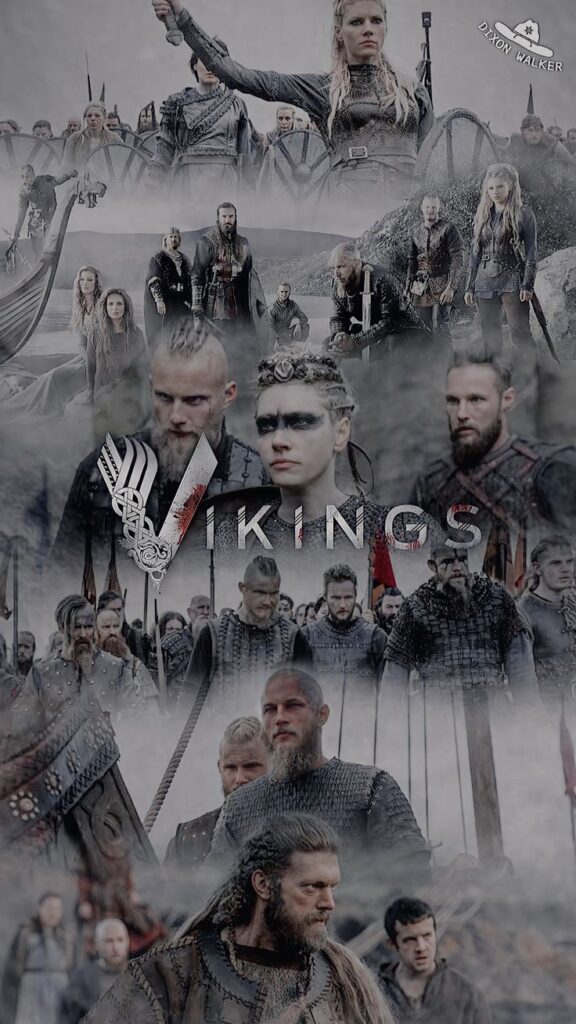



Embarking on the journey of “Vikings” reveals not just a series, but a cultural phenomenon that has resonated deeply with audiences around the globe. From its premiere, the series has captured the imagination of viewers with its blend of historical drama, epic storytelling, and rich character development, earning acclaim for its meticulous attention to detail and its exploration of Norse mythology and history.
Cultural Phenomenon
- Global Appeal:
“Vikings” has transcended cultural boundaries to become a global sensation, attracting viewers from diverse backgrounds who are drawn to its portrayal of Viking culture, exploration, and conquest. The series’ ability to blend historical accuracy with compelling storytelling has resonated particularly strongly in regions with a historical connection to the Vikings, such as Scandinavia and parts of Europe, where audiences have embraced the series as a celebration of their cultural heritage.
- Engaging Narratives:
At its core, “Vikings” weaves a tapestry of narratives that explore universal themes of ambition, loyalty, betrayal, and the pursuit of destiny. Whether chronicling Ragnar Lothbrok’s rise from farmer to legendary leader or delving into the political machinations of Norse society, each storyline is crafted with depth and nuance, captivating viewers with its emotional complexity and unpredictable twists. This narrative depth has not only kept audiences invested but has also sparked discussions and debates about historical accuracy and the portrayal of Viking culture.
Critical Acclaim
- Artistic Merit:
Critics have lauded “Vikings” for its ambitious storytelling and its ability to bring historical events and characters to life with authenticity and creativity. The series’ production values, including its meticulous set design, costume craftsmanship, and evocative cinematography, have been highlighted as contributing factors to its immersive portrayal of the Viking Age. Each episode is a visual and auditory feast that transports viewers to ninth-century Europe, where the clash of civilizations unfolds amidst stunning landscapes and intricate political intrigues.
- Character Depth:
Central to the series’ acclaim are its compelling characters, portrayed by a talented ensemble cast who infuse historical figures with humanity and depth. Travis Fimmel’s portrayal of Ragnar Lothbrok, known for his charisma and strategic brilliance, has been particularly celebrated for capturing the complexities of a Viking leader torn between ambition and personal loyalty. Similarly, Katheryn Winnick’s depiction of Lagertha, a shieldmaiden and queen, has resonated with audiences for its portrayal of female empowerment and resilience in a male-dominated society.
Legacy and Enduring Impact
- Cultural Legacy:
Beyond its entertainment value, “Vikings” has left a lasting cultural legacy, inspiring renewed interest in Viking history, mythology, and cultural heritage. The series has spurred academic research, artistic interpretations, and tourism to historical Viking sites, underscoring its role in shaping popular perceptions of Norse civilization and its enduring impact on global culture. Through its portrayal of Viking exploration and conquest, “Vikings” has become a touchstone for discussions about cultural identity, historical interpretation, and the legacy of ancient civilizations.
- Fan Engagement:
The passionate fan base of “Vikings” has actively engaged with the series through social media platforms, fan communities, and conventions dedicated to the show. Discussions about character development, plot twists, and historical accuracy abound, creating a vibrant online community where fans share theories, fan art, and deep dives into Viking history. This ongoing engagement has fostered a sense of camaraderie and shared enthusiasm among viewers worldwide, contributing to the series’ enduring popularity and cultural impact.
Continuation of the Saga
- Spin-Offs and Adaptations:
As “Vikings” concludes its original run, its legacy continues through spin-offs and adaptations that explore new chapters in Viking history and mythology. These extensions of the “Vikings” universe promise to delve deeper into untold stories and lesser-known figures from Norse sagas, offering fans new perspectives on the era’s legends and expanding the series’ narrative universe. This continuity ensures that the spirit of adventure and exploration ignited by “Vikings” endures for future generations of viewers and historians alike.
- Enduring Appeal:
The enduring appeal of “Vikings” lies not only in its dramatic storytelling and visual spectacle but also in its ability to resonate with audiences on an emotional and cultural level. As viewers journey alongside Ragnar Lothbrok and his descendants from the shores of Scandinavia to the kingdoms of England and beyond, they are immersed in a tale that celebrates the resilience, ambition, and cultural legacy of the Viking Age. Through its exploration of universal themes and historical authenticity, “Vikings” stands as a testament to the power of storytelling to transcend time and geography, leaving an indelible mark on the cultural landscape.
In the realm of television epics, “Vikings” stands as a beacon of excellence, its legacy echoing across continents and generations as a timeless tribute to the enduring allure of legendary sagas. From its inception to its global reception, the series has captivated, inspired, and sparked imaginations, becoming a touchstone for discussions about history, identity, and the human spirit. As audiences continue to embrace the saga of Ragnar Lothbrok and his kin, “Vikings” remains a testament to the transformative power of storytelling and the enduring resonance of epic narratives.
In the expansive world of “Vikings,” where the clash of steel echoes through fjords and the sagas of legendary figures unfold amidst the tumult of history, polls and quizzes serve as interactive gateways that invite fans to immerse themselves deeper into the rich tapestry of Norse culture, mythology, and the intricate characters that populate this epic saga.
Engaging with History and Mythology
- Polls of Discovery:
Within the realm of “Vikings,” polls act as conduits of exploration, guiding fans through the labyrinthine corridors of historical inquiry and mythological intrigue. Questions about the conquests of Ragnar Lothbrok, the religious practices of the Norse gods, and the societal roles of shieldmaidens provoke thoughtful discussions among viewers, fostering a community united by a shared fascination with the enigmatic world of the Viking Age. - Quizzes of Knowledge:
Quizzes within the realm of “Vikings” transcend mere tests of memory; they are quests for mastery over the intricate details that define the series’ narrative landscape. By challenging fans with questions about historical accuracy, cultural customs, and character arcs, these quizzes inspire deeper dives into the series’ lore, rewarding participants with insights that enrich their understanding of the saga’s complexities and thematic depths.
Exploring Character Arcs and Motivations - Character Polls:
At the heart of “Vikings” lies a tapestry of characters whose journeys are as tumultuous as the seas they sail. Polls focusing on character motivations, moral dilemmas, and pivotal decisions invite fans to unravel the intricate webs of loyalty, ambition, and honor that define figures like Lagertha, Floki, and Ivar the Boneless. By contemplating these polls, viewers gain nuanced perspectives into the psychological complexities that shape the series’ protagonists and antagonists alike. - Quizzes of Allegiance:
As alliances shift and betrayals unfold within “Vikings,” quizzes of allegiance challenge fans to navigate the treacherous waters of power dynamics and personal ambition. By testing knowledge of political intrigue, strategic alliances, and the consequences of characters’ actions, these quizzes illuminate the intricacies of Viking society while prompting deeper reflections on themes of leadership, loyalty, and the pursuit of glory amidst a backdrop of constant upheaval.
Interactive Insights and Community Bonds - Historical Accuracy Polls:
Amidst the drama and spectacle of “Vikings,” polls that delve into historical accuracy serve as anchors of authenticity, grounding the series’ narrative in the realities of ninth-century Scandinavia and beyond. By exploring topics such as Viking shipbuilding techniques, religious rituals, and societal structures, these polls bridge the gap between fiction and history, empowering fans to distinguish between myth and reality within the meticulously crafted world of “Vikings.” - Fan Quizzes of Lore:
Fan-created quizzes of lore within “Vikings” celebrate the series’ expansive mythos, inviting enthusiasts to test their knowledge of lesser-known characters, obscure historical events, and the intricacies of Norse folklore. Through these quizzes, fans not only deepen their understanding of the series’ narrative tapestry but also forge bonds of camaraderie with fellow viewers who share their passion for the legends, myths, and historical insights woven into the fabric of “Vikings.”
Legacy and Impact - Cultural Reverberations:
Beyond the screens that illuminate the tales of “Vikings,” polls and quizzes leave a lasting legacy, sparking ongoing conversations about history, mythology, and the enduring allure of Viking sagas. As fans engage with these interactive narratives, they contribute to a collective exploration of themes that resonate across centuries, celebrating the legacy of courage, exploration, and cultural exchange embodied by the series. - Community Continuity:
In the wake of “Vikings,” polls and quizzes continue to thrive as interactive tributes to its enduring legacy. As fans revisit the series through reruns, spin-offs, and adaptations, these interactive narratives serve as portals that transcend time and space, inviting new generations to embark on their own journeys of discovery within the richly woven tapestry of Norse history and legend.
In the realm of “Vikings,” where valor meets intrigue and legends are forged in the crucible of history, polls and quizzes emerge as interactive chronicles that extend the saga’s narrative threads into the hands and hearts of its devoted fans. Through these interactive narratives, viewers become not only witnesses to history but active participants in the ongoing exploration of the timeless themes that define the Viking Age and beyond. Thus, within the realm of polls and quizzes lies a testament to the enduring power of storytelling, the boundless curiosity that fuels the quest for knowledge, and the unifying force of community that celebrates the spirit of adventure and discovery.
arrative arc. These theories weave together historical speculation with creative extrapolation, inviting viewers to expand their horizons and reimagine the possibilities that lie beyond the known realms of “Vikings.”
Exploring Character Depths
- Psychological Intrigue:
At the core of fan theories lies a deep fascination with the psychological complexities of “Vikings” characters. Speculations delve into the inner turmoil of Lagertha, exploring how her experiences as a shieldmaiden and queen shape her resilience and motivations. Theories surrounding characters like Floki delve into the spiritual dimensions of their journeys, pondering the existential dilemmas faced by those who navigate the crossroads of faith, ambition, and personal identity within the tumultuous Viking Age.
- Legacy and Lineage:
The lineage and legacies of prominent Viking families, such as the Lothbroks and the Ragnarssons, ignite passionate debates among fans. Theories explore ancestral ties, royal bloodlines, and the implications of familial bonds on the series’ dynastic struggles. Speculations about the repercussions of intergenerational conflicts and alliances reveal the intricate webs of power, loyalty, and ambition that shape the fate of kingdoms and the destinies of characters across generations.
Interactive Insights and Community Discourse
- Cultural Reverberations:
Fan theories serve as catalysts for vibrant discussions that transcend cultural boundaries and historical epochs. By delving into themes of cultural exchange, religious syncretism, and societal evolution within “Vikings,” fans contribute to a deeper understanding of the series’ thematic resonance and historical authenticity. These discussions foster a community of critical engagement, where enthusiasts engage in rigorous analysis, share diverse perspectives, and celebrate the enduring impact of Viking mythology and history on popular culture.
- Legacy of Imagination:
As “Vikings” concludes its saga, fan theories continue to thrive as testaments to the series’ legacy of imagination and storytelling prowess. Through online forums, social media platforms, and fan conventions, enthusiasts perpetuate the spirit of creative exploration, refining theories, and celebrating the enduring allure of Norse lore. The legacy of fan theories extends beyond the screen, embodying the transformative power of collective imagination and the enduring fascination with epic tales of courage, betrayal, and conquest within the timeless world of “Vikings.”
In the realm of “Vikings,” where legends are forged in the crucible of history and myth, fan theories emerge as constellations that illuminate the shadows of the past and envision futures yet unwritten. Through their collaborative creativity and relentless pursuit of truth, fans become co-architects of the saga, unraveling mysteries, and reshaping narratives in ways that honor the timeless spirit of Viking lore. Thus, within the realm of fan theories lies a testament to the boundless potential of storytelling and the transformative power of community, perpetuating the legacy of adventure and discovery within the epic realm of “Vikings.”
Aslaug Athelstan Bjorn Ironside Character Analysis epic battles Epic Saga Floki Harald Finehair Historical Accuracy Historical Characters Historical Drama Historical Entertainment Historical Fiction Ivar the Boneless Kattegat King Ecbert Lagertha Medieval Drama Norse Gods Norse Legends Norse Mythology Norse sagas Norse warfare Ragnar Lothbrok Rollo Scandinavian History Series Discussion Series Review shieldmaiden Television Series TV Series Breakdown TV Show Analysis TV Show Insight Viking alliances Viking battles Viking brotherhood Viking clans Viking costumes Viking Culture Viking era Viking expansion Viking exploration Viking History Viking kings Viking leadership Viking legends Viking politics Viking power struggles Viking raids Viking religion Viking revenge Viking rituals Viking rivalries Viking ships Viking Society Viking voyages Viking Warfare Viking warriors Viking weapons Vikings cast Vikings characters Vikings episodes Vikings on History Channel Vikings seasons Vikings soundtrack Vikings TV Series
Last modified: September 21, 2024


